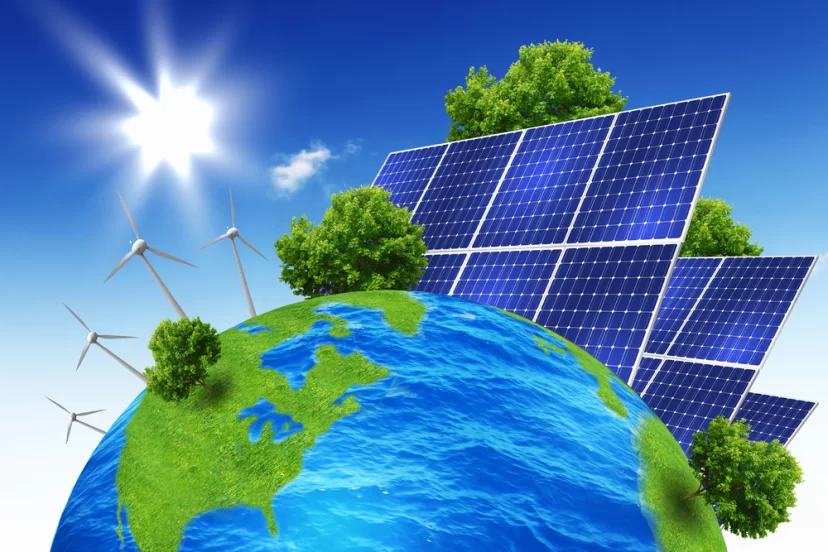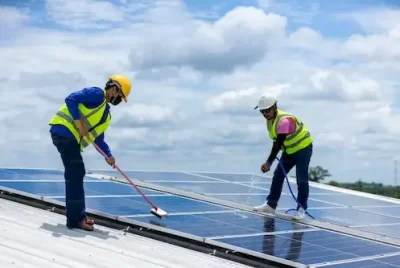Solar Power vs. Traditional Energy Sources: A Comparison of Costs and Environmental Impact
We may earn a commission for purchases made using our links. See our disclosure to learn more.
I have always been fascinated by the power of the sun and its potential to transform the way we generate electricity. In this article, I will delve into the comparison of solar power vs. traditional energy sources, analyzing their respective costs and environmental impacts. By providing helpful suggestions and reasons for my recommendations, I hope to guide you in making informed decisions regarding your energy choices.
Solar Power: Advantages and Costs
Benefits of Solar Power
When it comes to solar power, there are several key advantages that make it an attractive option for both residential and commercial applications. Firstly, solar power is environmentally friendly. By harnessing the sun’s energy, solar panels produce electricity without emitting harmful greenhouse gases that contribute to climate change. This clean and renewable energy source helps to reduce our carbon footprint and preserve the planet for future generations.
Secondly, solar power is a sustainable energy solution. Unlike traditional energy sources that rely on fossil fuels, which are finite and will eventually run out, solar energy is abundant and will continue to be available as long as the sun shines. This long-term sustainability ensures that we can meet our energy needs without depleting valuable resources.
Lastly, solar power offers the potential for significant cost savings in the long run. While the initial installation costs of solar panels may be higher compared to traditional energy sources, such as coal or natural gas power plants, the ongoing operational expenses are significantly lower. Once the solar panels are installed, they require minimal maintenance, and the fuel source (sunlight) is free. This means that over time, the savings on energy bills can offset the initial investment, resulting in considerable cost savings.
Cost Factors Associated with Solar Power
It is important to consider the various cost factors associated with solar power. The initial installation costs of solar panels can be substantial. This includes the purchase of panels, inverters, batteries (if applicable), and other necessary equipment. Additionally, there may be expenses related to obtaining permits and hiring professional installers.
Maintenance and repair costs should also be taken into account. While solar panels are generally durable and require minimal maintenance, occasional cleaning and inspection are necessary to ensure optimal performance. In the case of any damage or malfunction, repairs may be required, which could incur additional costs.
However, despite these costs, the return on investment (ROI) for solar power can be quite promising. Over time, the savings on electricity bills can offset the initial expenses, resulting in a positive financial outcome.
Traditional Energy Sources: Advantages and Costs
Overview of Traditional Energy Sources
Traditional energy sources, such as coal, natural gas, and nuclear power, have been the mainstay of our energy infrastructure for decades. They offer certain advantages that make them attractive options for energy generation.
Advantages of Traditional Energy Sources
One of the key advantages of traditional energy sources is their reliability and stability. Power plants using fossil fuels or nuclear energy can provide a consistent and predictable supply of electricity, ensuring that energy demands are met even during peak periods.
Moreover, traditional energy sources benefit from an established infrastructure. Power plants, transmission lines, and distribution networks are already in place, making it easier to deliver electricity to consumers. This infrastructure has been developed over many years, ensuring a reliable supply of energy to communities.
Additionally, traditional energy sources often have lower initial costs compared to solar power. The construction of power plants and their associated infrastructure may require significant investments upfront, but these costs are spread out over a long period, making them relatively more affordable in the short term.
Cost Factors Associated with Traditional Energy Sources
While traditional energy sources have their advantages, it is important to consider the cost factors associated with them. One significant aspect is the fluctuating prices of fossil fuels. The cost of coal, natural gas, and oil can vary depending on market conditions and geopolitical factors. This volatility can lead to uncertainty in energy prices, making it challenging to predict and plan for long-term costs.
Furthermore, traditional energy sources have a significant environmental impact. The burning of fossil fuels releases greenhouse gases, such as carbon dioxide, into the atmosphere, contributing to global warming and climate change. Additionally, the extraction and transportation of fossil fuels can cause environmental degradation and pollution.
Lastly, traditional energy sources rely on finite resources. Coal, oil, and natural gas are non-renewable and will eventually be depleted. This poses long-term sustainability concerns, as we need to transition towards more sustainable and renewable energy sources to ensure a secure energy future.
A Comparison of Costs
To make an informed decision about solar power vs. traditional energy sources, it is crucial to compare their costs in different aspects.
Initial Costs
When it comes to initial costs, solar power requires a higher upfront investment. The purchase and installation of solar panels, inverters, and other necessary equipment can be significant. However, it’s worth considering that there are various government incentives, grants, and tax credits available to reduce the financial burden and encourage the adoption of solar energy.
On the other hand, traditional energy sources benefit from an established infrastructure, which lowers their initial costs. The construction of power plants and the associated infrastructure have already been completed, reducing the upfront investment required. However, it’s important to note that the costs of building new power plants or upgrading existing ones can still be substantial.
Operational Costs
In terms of operational costs, solar power has a distinct advantage. Once the solar panels are installed, they require minimal ongoing expenses. Solar energy is derived from sunlight, which is a free and abundant resource. There are no fuel costs associated with solar power, unlike traditional energy sources that rely on costly fossil fuels.
Maintenance and repair costs for solar panels are relatively low. Regular cleaning and inspection can ensure optimal performance, and any necessary repairs are typically covered by warranties or can be done at a relatively low cost. Overall, the operational costs of solar power are significantly lower compared to traditional energy sources.
Traditional energy sources, on the other hand, have ongoing operational costs. The cost of purchasing and transporting fossil fuels, such as coal or natural gas, adds to the expenses. Additionally, power plants using traditional energy sources require regular maintenance, repairs, and upgrades, which can be costly.
Long-Term Costs
When considering the long-term costs, solar power proves to be a financially advantageous option. Over time, the savings on electricity bills can offset the initial installation costs of solar panels. As energy prices continue to rise, the fixed cost of solar power remains the same, resulting in potential long-term savings.
Traditional energy sources, on the other hand, face uncertainties in terms of future costs. Fluctuating fuel prices can make it challenging to predict and plan for long-term expenses. Additionally, as environmental regulations become stricter, traditional energy sources may face increased costs to comply with emission standards and invest in pollution control technologies.
Considering the potential for cost savings and long-term financial benefits, solar power emerges as a compelling choice.
Environmental Impact
The environmental impact is a crucial factor to consider when comparing solar power vs. traditional energy sources.
Solar Power: Clean Energy Generation
Solar power is a clean and sustainable source of energy. It generates electricity without emitting greenhouse gases or other harmful pollutants. By harnessing the power of the sun, solar panels convert sunlight into electricity through a process called photovoltaic conversion. This means that solar power helps reduce our carbon footprint and mitigates the negative effects of climate change.
Furthermore, solar power contributes to the preservation of natural resources. Unlike traditional energy sources that rely on finite resources, solar energy is abundant and freely available. By embracing solar power, we can reduce our reliance on fossil fuels and protect valuable resources for future generations.
Traditional Energy Sources: Environmental Concerns
In contrast, traditional energy sources have significant environmental concerns. Fossil fuel-based power plants release carbon dioxide, sulfur dioxide, nitrogen oxides, and other pollutants into the atmosphere when burning coal, oil, or natural gas. These emissions contribute to air pollution, smog formation, and the exacerbation of climate change.
Additionally, the extraction and transportation of fossil fuels can cause environmental degradation. Mining for coal and drilling for oil can disrupt ecosystems, destroy habitats, and contaminate water sources. Oil spills and accidents during the transportation of fossil fuels can have severe ecological consequences, polluting water bodies and harming wildlife.
The combustion of fossil fuels also contributes to the acidification of oceans and the degradation of biodiversity. The negative impacts on marine life and ecosystems are far-reaching and can have long-lasting effects.
Considering these environmental concerns, it is clear that solar power offers a much cleaner and more sustainable alternative to traditional energy sources.
Factors to Consider Regarding Solar Power vs. Traditional Energy Sources
When making a decision about energy sources, several factors should be taken into consideration:
Location and Climate Suitability
The availability of sunlight is a crucial factor in determining the viability of solar power. Regions with ample sunlight and minimal shading are ideal for solar installations. However, even in areas with less sunshine, advancements in solar technology have made it possible to generate electricity efficiently.
Traditional energy sources are not as dependent on specific locations and can be deployed in various geographic regions. However, proximity to fuel sources and infrastructure should be considered when evaluating the overall feasibility.
Energy Requirements and Usage Patterns
Analyzing your energy requirements and usage patterns is essential. Solar power installations can be customized to meet your specific needs, from small-scale residential systems to large-scale commercial installations. It is important to assess your energy demands to determine the appropriate size and capacity of a solar power system.
Traditional energy sources have the advantage of being able to provide a consistent and reliable supply of electricity, making them suitable for industries and applications with high energy demands or where uninterrupted power is crucial.
Financial Considerations
Financial factors play a significant role in the decision-making process. While solar power may have higher upfront costs, the potential for long-term savings should be considered. Incentives such as government grants, tax credits, and net metering can help offset the initial investment and make solar power more financially viable.
For traditional energy sources, the fluctuating costs of fossil fuels and potential future regulations should be taken into account. It is important to consider the long-term financial implications and stability of energy prices.
Environmental Concerns and Personal Values
Environmental considerations and personal values are increasingly important factors when choosing energy sources. If reducing your carbon footprint and supporting sustainable practices are priorities for you, solar power aligns with these values. Solar energy provides a tangible way to contribute to the fight against climate change and protect the environment.
On the other hand, if reliability and energy security are paramount, traditional energy sources may be favored. However, it is essential to recognize the environmental impacts associated with these sources and explore ways to mitigate them.
Conclusion
In conclusion, the comparison of solar power vs. traditional energy sources reveals distinct advantages and cost considerations for each. Solar power offers numerous benefits, including its environmental friendliness, long-term sustainability, and potential cost savings over time. Although it requires an initial investment, advancements in technology and government incentives make solar power an increasingly accessible option.
Traditional energy sources, while providing reliability and established infrastructure, come with significant environmental concerns and potential long-term cost uncertainties.
Ultimately, the choice of solar power vs. traditional energy sources should be based on factors such as location, energy requirements, financial considerations, environmental impact, and personal values. By carefully considering these factors, individuals can make informed decisions that align with their goals for a sustainable and energy-efficient future.
FAQs (Frequently Asked Questions)
1. How do solar panels work?
Solar panels convert sunlight into electricity using photovoltaic cells. When sunlight strikes the panels, it generates a flow of electrons, creating a direct current (DC). An inverter then converts the DC into alternating current (AC), which is usable electricity for homes and businesses.
2. Are solar panels suitable for all types of buildings?
Solar panels can be installed on various types of buildings, including residential homes, commercial buildings, and even industrial facilities.
The suitability of solar panels depends on factors such as the availability of sunlight, roof orientation, shading, and structural integrity. A professional solar installer can assess your specific building and provide recommendations.
3. Can solar power generate enough electricity to meet all my energy needs?
The capacity of a solar power system depends on factors such as the size of the installation, available sunlight, and energy consumption patterns. While it is possible for solar power to meet all your energy needs, it may require a properly sized system and efficient energy usage. It’s important to consult with a solar professional to determine the appropriate system size for your requirements.
4. How long do solar panels last?
Solar panels are designed to be durable and can have a lifespan of 25 years or more. With proper maintenance and care, they can continue to generate electricity efficiently throughout their lifespan. It’s important to regularly clean and inspect the panels to ensure optimal performance.
5. Are there any incentives or financial benefits for installing solar panels?
Yes, there are various incentives and financial benefits available for installing solar panels. These can include government grants, tax credits, and net metering programs. Net metering allows you to sell excess electricity generated by your solar panels back to the grid, reducing your overall energy costs. It’s recommended to research local incentives and consult with a solar professional to take advantage of available benefits.
6. How does solar power contribute to reducing greenhouse gas emissions?
Solar power generates electricity without burning fossil fuels, which reduces the emissions of greenhouse gases such as carbon dioxide. By transitioning to solar power, we can reduce our reliance on fossil fuels and mitigate the negative impacts of climate change. It’s an effective way to make a positive environmental impact.
Remember, when considering solar power or traditional energy sources, it’s essential to evaluate your specific circumstances, energy requirements, and long-term goals. Consulting with professionals and conducting thorough research will help you make an informed decision that aligns with your needs and values.




